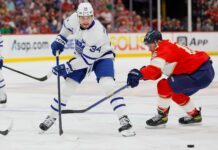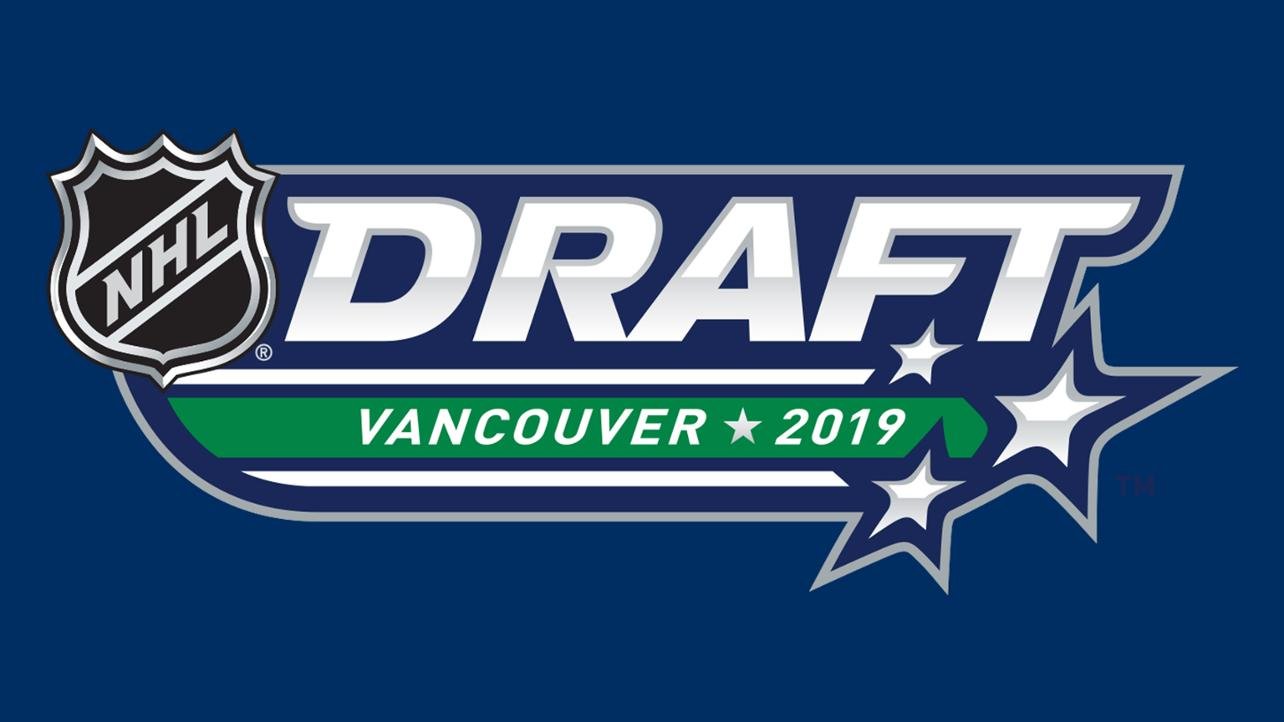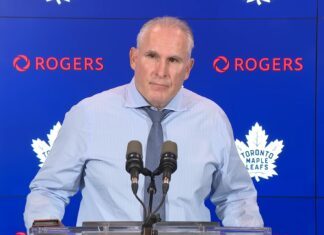Welcome to my 2019 NHL Draft Rankings. This will be a top 62, but my list excludes goalies, simply because I would have no idea what to say about them.
Without further ado:
Tier One (1)
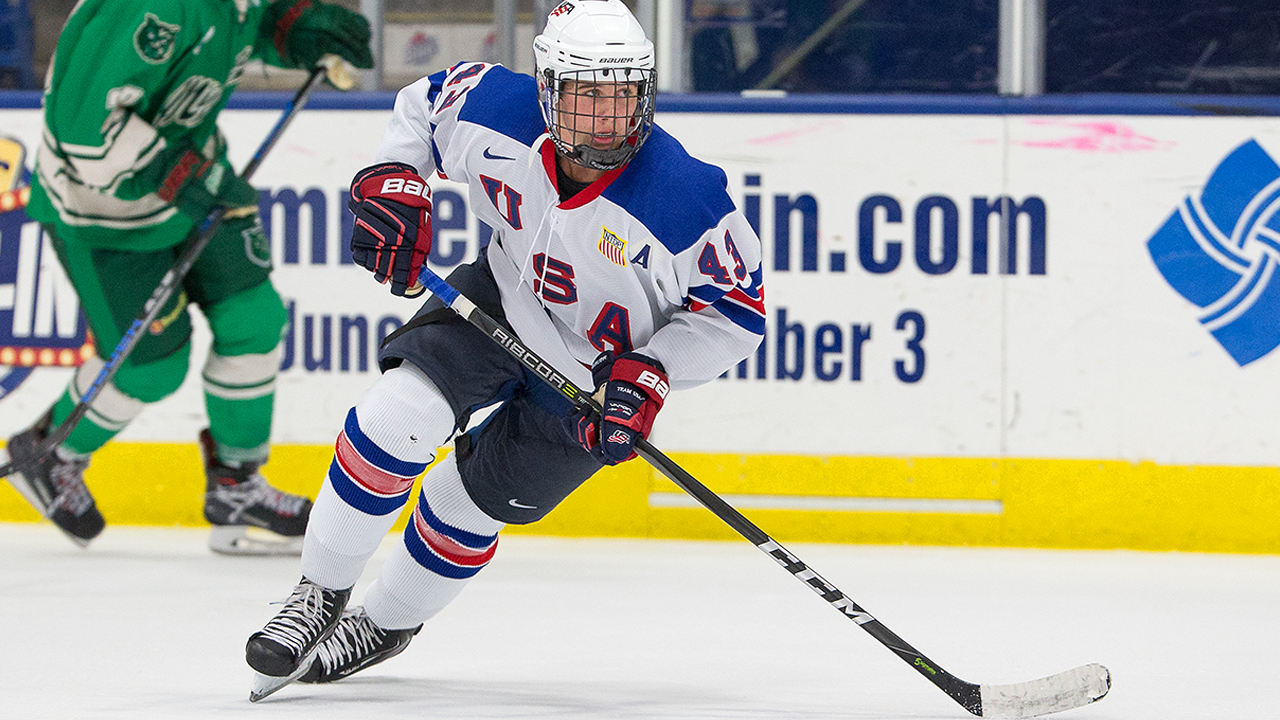
1. Jack Hughes, 5’11” C, USDP – USHL (2.00 P/GP)
He’s a virtual lock to be a first-line center at the NHL level and offers the transition and playmaking skill to resemble Mathew Barzal. His point-per-game production was simply incredible this season, and I expect that he will be among the NHL leaders in assists someday. He does not offer the strength and puck protection of Kaapo Kakko, but he’s a safe bet to be a high-end scorer and teams are always trying to build up the middle.
He will want to eventually get stronger in order to improve defensively, but he’s a future 70+ point center and it’s difficult for a team to pass that up.
Tier Two (2)

2. Kaapo Kakko, 6’2″ RW, TPS – Liiga (0.84 P/GP)
He wins an incredible amount of puck battles and he’s going to be outstanding in terms of statistics like corsi, MAGNUS, and RAPM. It’s close to impossible for defenders to knock him off the puck and he’s an unbelievable puck carrier in tight spaces. He reminds me of the high-end “point forwards” in the NBA; he forces additional defenders to come over to help, then quickly finds his open teammate.
He’s great below the face-off dots, where strong defenders like Ryan Suter can’t even knock him off the puck. His one-timer is a weapon on the powerplay, but his calling card is his ability to take the puck and dominate for an entire shift. He’s the clear #2.
Tier Three (3-6)
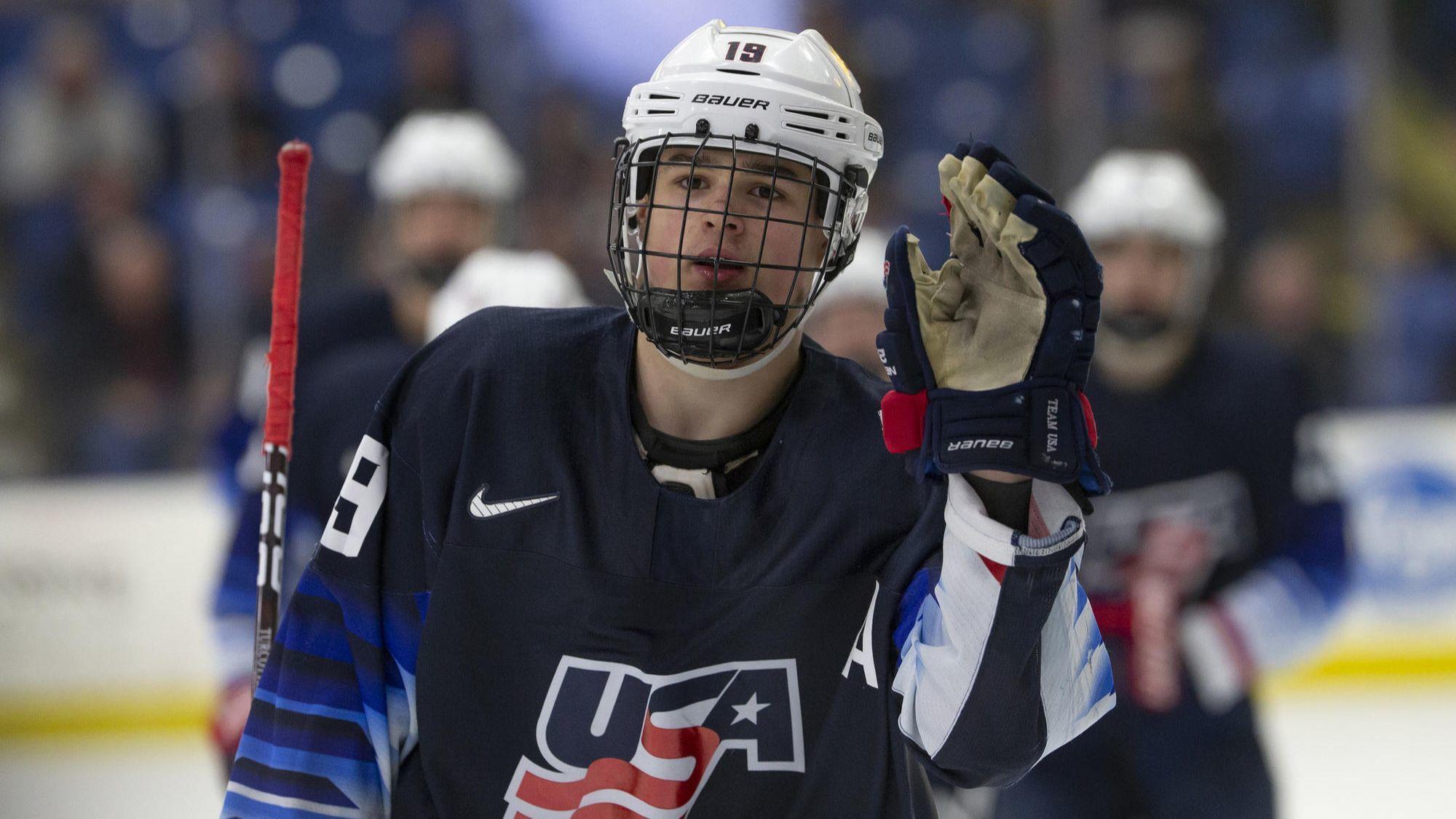
3. Alex Turcotte, 5’11” C, USDP – USHL (2.13 P/GP)
Turcotte is a well-rounded center who should have no problem posting 60+ point seasons in his prime. Fast and strong enough to match up against anyone, he scored at an incredible rate with the USDP this year. He’s above average as a zone entry threat, playmaker and shooter, so he can basically do it all.
I see him as a Logan Couture type. His point-per-game production this season is remarkable, his size is not a concern, and he’s a safe bet to stick up the middle. Even if he comes up short of being the next Couture, you’re still probably looking at a Nazem Kadri type and that’s a valuable player in his own right. I’ll be surprised if he falls out of the top five or six.
4. Bowen Byram, 6’1″ LD, Vancouver – WHL (1.06 P/GP)
A star at last summer’s Hlinka-Gretzky tournament, he followed that up with 34 goals in 89 games between the WHL regular season and playoffs. Similar to Evan Bouchard of last year’s draft, his high-end vision is evident on every shift and his shot is a legitimate weapon. He’s going to play on a top power play unit and he’s strong enough to play in a matchup role.
His speed is good rather than great, and I would put him comfortably behind Quinn Hughes of last year’s draft as a result. He needs to take another step forward in the defensive zone, but he boasts the size, speed, and composure to be successful there in the future. He’ll be a top-five pick.
5. Trevor Zegras, 6’0″ C/LW, USDP – USHL (1.48 P/GP)
Zegras is an incredibly creative playmaker who creates a ton of high-danger chances for his teammates. He’s a magician with the puck, impossible to predict, and a human highlight reel. It’s not difficult to envision him becoming a high-end point producer at the NHL level; as he looks like the next Evgeny Kuznetsov on the power play. While he spent plenty of time at center this year, he ended up shifting over to left-wing to form a dominant line with Hughes and Cole Caufield.
He needs to get one step quicker if he wants to be an all-star. If he does not, he may end up as a scoring winger rather than a play-driving center. Either way, he’s a top-ten pick in my eyes as he’s so damn impressive as a playmaker. He protects the puck well and wins a fair amount of battles, but I think he’ll need some time before he’s a two-way center.
6. Dylan Cozens, 6’3″ C, Lethbridge – WHL (1.24 P/GP)
He’s a big, fast center who was one of Canada’s best transition players at the Hlinka. It’s so rare to see this type of size, speed, and puck-carrying combination, so he’s a lock for the top ten as a result. He’s essentially a big, powerful centre who carries the puck like a small and zippy playmaker.
His speed and strength make him a perfect fit for a matchup role and his point-per-game production has been impressive in both the WHL and international tournaments. While all the tools are here to be a high-end second line center, he was used on the wing at the U18 tournament and could also be a high-end power winger who dominates in terms of stats like RAPM, CF%, or MAGNUS. He’ll play on the half-wall on an NHL powerplay, win plenty of battles, and could score 30 goals in any given season. He’s behind Zegras as a playmaker, but this is a complete player who could easily go third overall.
Tier Four (7-13)
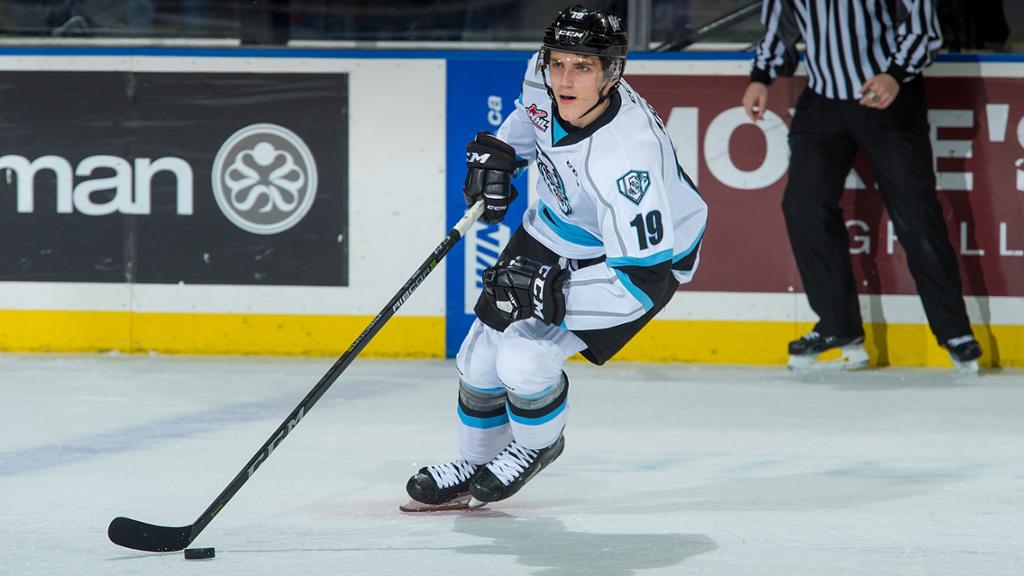
7. Kirby Dach, 6’4″ C, Saskatoon – WHL (1.18 P/GP)
Dach’s size, strength, and quick hands allow him to win battles and generate takeaways; as a result, he’s been able to tilt the ice in his team’s favour in best-on-best events. He’s a talented playmaker and puck carrier, with the size to be the net-front guy on the power play and the vision to be an outside facilitator. He needs to take another step forward as a goal scorer, but he’s skilled enough with the puck to warrant a top-10 selection.
He’s a decent skater for his size, but he’s simply “pretty good” in transition rather than your go-to entry threat. Given his long stride and lean build, it’s easy to envision him getting a step quicker and he’d be a force to be reckoned with if that happens. The hands are there, the playmaking is there, the strength is there, and the speed and shot should take another step forward. If he gets one step quicker, he could be a 60+ point center who is also capable defensively. If he doesn’t, he’s still strong and crafty enough to dominate down low.
8. Peyton Krebs, 5’11” C, Kootenay – WHL (1.06 P/GP)
He essentially the forward version of Rasmus Sandin. He’s just an okay skater for his size and he doesn’t have much room left to fill out, but he’s a crafty puck mover who just out-works and out-thinks his opponents. He’s consistently one of the best players on the ice, even when he’s playing for Canada’s top line.
He’s a creative playmaker in the offensive zone, a responsible center in the defensive zone, and consistently makes smart plays. He’ll be his coach’s favourite player and play in all-situations. I’m not sure that he has the tools to become a star, but it’s tough to complain about a player who is clearly one of the best players on the ice every shift. He reminds me of Habs prospect Nick Suzuki and I expect him to be a 50-60 point center like Kadri. Krebs had surgery on his Achilles tendon earlier this month, but I am no medical expert, so that’s not reflected in my rankings at the moment.
9. Cole Caufield, 5’7″ RW, USDP – USHL (1.46 P/GP)
He’s quick enough to have success at the NHL level as a 5’7″ winger, and it’s not difficult to see him as a future 30-goal scorer. His shot is high-end, and while it’s not as powerful as a one-timer from Ovechkin or Stamkos, you can certainly build your powerplay around him. There’s also plenty of deception in his wrist shot, and his release is exceptionally quick.
His speed and work ethic should allow him to be competent defensively, even at his size. However, it’s still going to be tough to offer the same two-way ability as the other players in the top 10, and he’s not going to be an elite playmaker. I expect him to be 30-goal scorer someday, even if he’s not quite as well-rounded as the center prospects in this range of the draft.
10. Alex Newhook, 5’10” C, Victoria – BCHL (1.92 P/GP)
Newhook is one of the fastest skaters in this class, while also being one of its best puck handlers. He’s also a little bit on the smaller side and you can out-muscle him in battles, so he’s going to have to score in order to be successful. He looks bound to be a primary facilitator on an NHL power play, but he’s probably a little bit behind Zegras in that area, so he’s not quite Mitch Marner offensively.
I’m going to compare him to Tyson Jost, who also dominated the BCHL and was also one of Canada’s most dangerous forwards at the U18 event. Like Jost, his lack of strength might push him to the wing early on in his career and it’s going to take a couple of years before he’s a real impact player. His speed and puck carrying combination scream top-six forward, but he needs to put the work in and get stronger if he wants to be a top-five player from this class. If he falls outside of the top 13 or so, he would be a steal.
11. Vasili Podkolzin, 6’1″ RW, SKA – VHL (0.36 P/GP in 14 games)
He’s a left-shooting sniper who is a pain in the ass to play against. His strength allows him to win battles and protect the puck and he’s impressive in transition. He’s fearless, has no problem going to the dirty areas to score, and offers both a strong wrist-shot and quick one-timer.
My main concerns are that he’s not going to get much stronger and he’s not exactly an elite playmaker. His shot makes him an above-average shooting threat, but he falls short of the truly elite class, so he’s not a lock to score 30 goals every year. He was absolutely dominant at the Hlinka and was basically a human highlight-reel in transition. I expect him to be a well-rounded 50+ point winger, but I’m not sure that he has enough growth left in him to be a regular 70-80 point scorer.
12. Matthew Boldy, 6’2″ LW, USDP – USHL (1.54 P/GP)
Boldy is a high-end power-forward who excels down low in the offensive zone. His strength and long reach make it difficult to knock him off the puck and his quick hands allow him to beat defenders and finish his chances. He’s an underrated playmaker with a fair amount of creativity and his quick release allows him to be a scoring threat from the slot.
He’s not fast enough to be your primary option in transition, but he’s strong enough as a passer to be respectable in this area. His calling card will be his work in the offensive zone, where his strength, hands, and scoring touch makes him a safe bet to score. His speed could limit him a little bit defensively and it could stop him from being a 65-70+ point winger, but he’s a safe bet to be a pretty valuable 50+ point player.
13. Thomas Harley, 6’3″ LD, Mississauga – OHL (0.85 P/GP)
His point-per-game production this year was similar to Rasmus Sandin, Mikhail Sergachev, Jakob Chychrun, and Cam Dineen from recent draft years. The eye test matches the point production for me as he was one of the best puck movers at both the Top Prospects Game and the U18 tournament. I think he’s talented enough to quarterback an NHL power play, and given that he’s 6’3″, his long reach should be an asset on the penalty kill.
He’s a smart player who consistently tilts the ice in his team’s favour. He played huge minutes for the Steelheads, but he just didn’t have an elite supporting cast around him. His speed is just okay rather than great, but I think he’s quick enough to be a competent transition defender. Good things happen when the puck is on his stick and I’m surprised he’s not in the top 20 on most draft boards.
Tier Five (14-19)

14. Bobby Brink, 5’8″ RW, Sioux City – USHL (1.58 P/GP)
He’s Jeremy Bracco like in terms of his footwork, vision, and playmaking. Brink found the scoresheet at a remarkable rate this year. He needs to get a step quicker if he wants to dominate at his size, but there’s no reason to think that he won’t be a talented powerplay quarterback. He competes well and he’s heavier than Bracco as well as a better shooter.
If he can improve his skating, the playmaking skill is there to rack up points at the NHL level. He’s quite strong for his size, which allows him to protect the puck and win battles. He’s not as complete as the two-way centers towards the top of this class and he wasn’t one of the top three players for the stacked U.S. team at the U18 tournament, but there’s a skillset to dream on here.
15. Arthur Kaliyev, 6’2″ LW, Hamilton – OHL (1.52 P/GP)
In terms of point-per-game, he’s the most impressive CHL player in this draft class — by a fairly wide margin. He also led his team in scoring by 23 points and posted six points in five games at the Hlinka, so it’s not like this was a fluke. He’s a left-shooting winger with a high-end shot and he also quietly has pretty good vision as a playmaker.
He’s well below-average as a skater and he seems to remind everyone of Patrik Laine as a result. I remember watching him play at the Hlinka and thinking, “there’s no way he’s a first-round pick”, but scoring 51 goals in 67 OHL games is no joke. He also found a way to produce in a big way at the Top Prospects Game even though he’s not always the flashiest player on the ice. I think the team that drafts him will be expecting him to become the 2018-19 version of Laine, which will come with some defensive concerns, but he’s a valuable scorer nonetheless.
16. Cam York, 5’11” LD, USDP – USHL (1.18 P/GP)
York is a strong skater who will be able to keep up with top NHL forwards and a poised puck mover who can contribute on an NHL powerplay. While he’s not overly big or flashy, he’s consistently one of the best players on the ice. He’s poised under pressure, generates clean zone exits, and he’s smart enough to be successful while defending against top forwards.
Given the lack of both size and flash, it’s tough to see him becoming a perennial all-star, but he’s a safe bet to be a valuable contributor. He shakes off opposing forecheckers and regularly tilts the ice in his team’s favour as a result. He’s not a big-time goal scorer, but that tends to get overrated when evaluating defensemen and he’ll still be a first-round pick when we do a hypothetical re-draft five years from now.
17. Ryan Suzuki, 6’1″ C, Barrie – OHL (1.15 P/GP)
Suzuki was a top point producer for Canada back at the Hlinka, where he stood out as a power play quarterback. He carries a lot of similarities to his brother as his calling card is his playmaking, he’s talented with the puck on his stick, and he is always one of the smartest players on the ice.
I don’t see him as a high-end skater, but good things tend to happen for his teammates when he is on the ice. He’s not overly physical either, so he’ll really be relying on his smarts and playmaking at the NHL level. Ultimately, I’ll be a little bit surprised if he’s a top ten pick, but he’ll be a steal if he goes outside of the top 20.
18. Ville Heinola, 6’0″ LD, Lukko – Liiga (0.41 P/GP)
This is a fun player to watch and he’s not given enough credit on most draft lists. Heinola is a smart player who sees the ice well and is able to make quick decisions. He can jump up in the rush and pick a corner with his wrist shot and he also fires his fair share of quick one-timers. He’s patient, does not fight the puck, and he is fairly responsible.
His quick stick allows him to generate takeaways, but he needs to get stronger if he ever wants to match up against top NHL forwards. Once he adds ten pounds, he should be a well-rounded defenseman who can contribute in all situations. I think he’s strong enough as a puck mover to be a top-four defenseman and he deserves more attention than he’s getting.
19. Philip Broberg, 6’3″ LD, AIK – Allsvenskan (0.22 P/GP)
He’s big and fast, which is usually almost always an intriguing combination. His end-to-end rushes put him on the map at the Hlinka, and his ability to jump up into the play has allowed him to be a big-time goal scorer. His ability to drop his shoulder and beat defenders out-wide makes him a strong zone entry threat, but he’s not as advanced as a distributor.
It’s tough not to like the speed and power combination, but I am a little bit concerned about his vision. He’s going to have a harder time overpowering his opponents at the NHL level, but it’s tough to think of many players who are as big and fast as Broberg and failed to have a long NHL career. Tyler Myers comes to mind as a player with size and speed, but probably isn’t a massive difference maker duo to his mediocre puck-moving ability. Broberg will probably go a little bit too early on draft day, but there is upside here if he can become a better passer.
Tier Six (20-24)
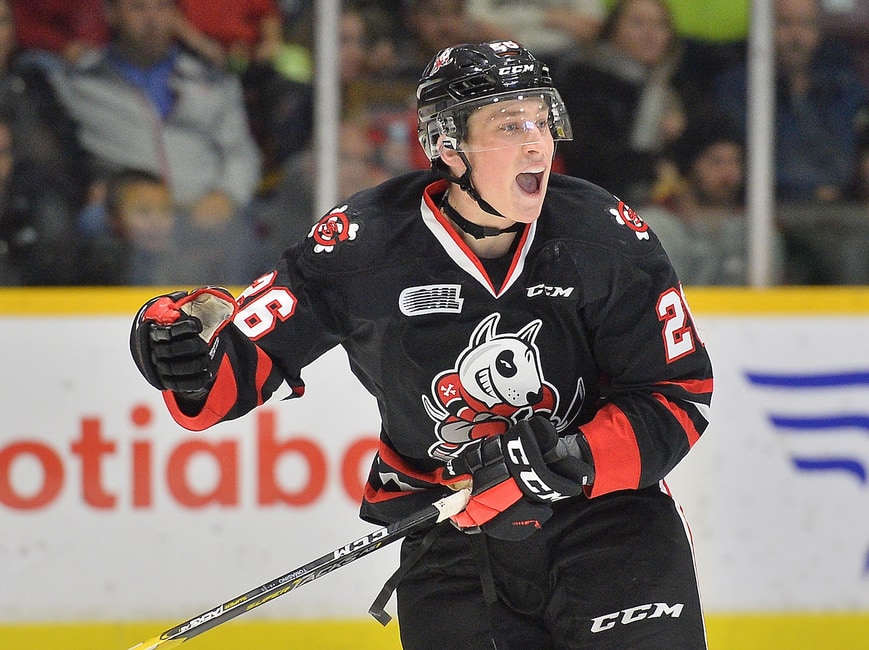
20. Pavel Dorofeyev, 6’1″ RW, Magnitogorsk – MHL (1.63 P/GP)
This is a difficult player to rank. He’s one of the older players in the draft and put up an impressive 31 points in 19 MHL games this season. He’s noticeably talented with the puck on his stick and can pick a corner with his wrist shot, but needs to get a little bit quicker and heavier. He’s not as well rounded as most of the players in the top 10, but there’s plenty to dream on here.
I’m going to assume that Dorofeyev will put on a little bit of weight, which would make him a pretty strong force offensively. He’s crafty enough to beat defenders down-low in the offensive zone and talented enough as a shooter to beat goaltenders on a consistent basis. I’d like to see him beat defenders out wide more often in transition, but it’s fun to watch him go through defenders with one of his clever moves. This is a high-risk, high-reward pick and you will be looking for a 60+ point winger here, but the probability of failure is probably too high for most teams to consider him in the top 12 or so.
21. Philip Tomasino, 6’0″ C, Niagara – OHL (1.07 P/GP)
Tomasino was one of the biggest zone entry threats for Canada at the U18 tournament and his speed will allow him to beat defenders out wide at the NHL level. He was overshadowed in Niagara by older players like Akil Thomas and Jason Robertson, but all the tools are there to dominate the OHL sooner rather than later.
He’s talented enough as both a playmaker and scorer to play on an NHL power play and his speed should help him to be competent defensively. He was simply good for Canada at the U18 rather than a star, so I don’t see him being a top-15 pick on draft day. He’s been playing on the wing during most of my viewings, but he can still generate entries there. It’s hard not to like a player who can skate and carry the puck like Tomasino.
22. Anttoni Honka, 5’10” RD, Jukurit/JYP – Liiga (0.3 P/GP)
Honka is one of the older players in this draft class. When I watched him play in last year’s U18 tournament, I wondered “who is this kid? And how on earth is he not in everyone’s first round?”. I quickly realized that he was too young for last year’s draft and was a little bit disappointed that I hadn’t found the best sleeper of that draft.
He’s well above-average as both a skater and puck carrier and he’s easily one of the most offensively-dangerous defensemen in this class. He can break down an opposing defense with his stick work, quarterback a top power play unit, and he can find his forwards with a beautiful stretch pass.
Here’s the problem: He’s small. The defensive concerns are legitimate and he needs to get stronger or NHL forwards will go right through him. However, I do think he’s quick enough to be capable in transition and it’s easy to envision him as a 40-50 point player.
23. Victor Soderstrom, 6’0″ RD, Brynas – SHL (0.16 P/GP)
He’s a mobile right-shooting defenseman who already has 44 SHL games under his belt. While he doesn’t have the straight-line speed of Quinn Hughes, he could probably be a professional figure skater. He’s advanced defensively for his age and his skating should allow him to challenge NHL forwards and prevent zone entries. He seems like a near lock to play a shutdown role for Sweden at the World Juniors.
His offensive game draws mixed reviews in scouting reports and I just haven’t seen him dominate in this area. He only had three assists in 44 SHL games, and while playing in a pro league is impressive in his own right, it’s weird that he had more goals than assists. He also wasn’t a big scorer at the U18 or U17 tournaments and I just haven’t seen much out of him as a playmaker. I’d prefer to have players like Byram, Harley, and Honka on my power play at this stage, but there’s obviously plenty of time for improvement.
24. Nicholas Robertson, 5’9″ LW, Peterborough – OHL (1.02 P/GP)
Robertson looked like one of the most skilled players on the ice at the Top Prospects game. He makes magic happen with the puck and scored at a point per game rate this year, which may not jump off the page at first but he did lead one of the league’s weaker teams in scoring. He was also a major standout for USA at the Hlinka, so there are certainly some reasons for optimism here.
He’s tiny, but he stands out as both a talented shooter and playmaker and is also one of the youngest players in this draft class. He seems to put on a show every time I watch him and he doesn’t let his size stop him from competing for loose pucks. He’s not incredibly fast for a smaller winger, but everything I have seen tells me that he’s one of the top 25 players in this class despite the extra risk involved with taking a 5’9″ winger.
Tier Seven (25-31)

25. Jakob Pelletier, 5’9″ C/LW, Moncton – QMJHL (1.37 P/GP)
Pelletier was a little bit disappointing at both the Hlinka and the U18, but he posted 89 points in 65 games this season and it’s tough to argue with those numbers. He’s an undersized scorer who plays with an edge and it’s nice to see that he’s not afraid of going to the dirty areas. He’s slightly above average in transition, offers decent vision, and racked up a ton of goals in the QMJHL this year.
He’s an above average skater in general, but he’s probably not an above average skater for a 5’9″ forward. He may end up on the wing at the pro level as a result, but he’ll win a lot of battles for a player of his size and competes well. I was a huge fan of Anthony Beavillier coming out of the QMJHL in his draft year, despite his size and lack of flash. I see Pelletier as a comparable player and I think he can do a little bit of everything despite his size.
26. Jordan Spence, 5’10” RD, Moncton – QMJHL (0.72 P/GP)
Spence scored at a very respectable 0.72 points-per-game clip in his rookie season and followed that up with a big showing at the U18 tournament. He does not carry the same long track record of many of the other top prospects in this draft, but he’s above-average as both a skater and puck mover. He’s talented enough offensively to quarterback a power play and he sure seems like a Kyle Dubas-type of player.
He’s not going to be a first-round pick and he might not even be a second round pick. However, he’s a right-shooting defenseman who moves well and moves the puck well, and that’s good enough for me. I think he’s one of the biggest sleepers in this class.
27. Moritz Seider, 6’4″ RD, Adler Mannheim – DEL (0.21 P/GP)
This is a bit of a placeholder ranking, as I have barely watched him play. Here’s what I can tell you about him: He big, he’s a good skater for his size, and he’s going to get even stronger. He played for Germany at the World Championships and I’m sure teams will be lining up for a 6’4″ right-shooting defenseman who can keep up with NHL forwards. His offensive game appears to be quite raw, but there’s a lot to dream on here.
28. Patrik Puistola, 6’0″ LW, LeKi – Mestis (1.18 P/GP)
Puistola was a big-time goal scorer at the Hlinka, U18, and in the Mestis this year. He can flat out put on a show when the puck on his stick. His shot is a weapon on the power play and he’s crafty in the offensive zone. He’s just an average skater and doesn’t play overly heavy, so he needs to score if he wants to make it as an NHL player. This is a high-risk, high-reward type of pick, as he has the hands and shot to grow into an NHL scorer, but the rest of his game may hold him back.
29. Samuel Fagemo, 6’0″ RW, Frolunda – SHL (0.6 P/GP)
Fagemo was one of my late-round targets for the Leafs last year, but he ended up going undrafted. All 31 teams are now regretting that as he looks bound to be an early pick this time around. He led Sweden with five goals back at his Hlinka tournament (not last summer, but the summer of 2017) and also led them in scoring a few years ago at the U17. I have no idea how he did not get drafted.
He scored 25 points in 42 games in a pro league, which is really quite remarkable. He’s well above average as a puck carrier, a decent skater, and has really emerged himself as a goal scorer. While he disappointed at the World Juniors, he should be one of their best forwards this time around and I won’t be surprised if he’s driving their top powerplay unit. The Leafs should strongly consider taking him if he’s available late in the second round.
30. Nils Hoglander, 5’9″ LW, Rogle – SHL (0.28 P/GP)
Hoglander is a highly skilled smaller forward with an impressive highlight reel. He regularly dekes out opposing defenders in an impressive fashion and it’s easy to see him producing on an NHL powerplay as a result. Here’s the problem: He was held off the scoresheet at both his U17 and U18 tournaments, and that’s concerning for a player with his size and speed.
There’s a good chance that he will be below average defensively at the NHL level and I think he has to score 40+ points to be successful. He’s skilled enough with the puck to do that, but he needs to be able to beat defenders out-wide at his size. I’m not overly impressed with his scoring production over the years or his top-speed, but there’s a lot of offensive skill to dream on here.
31. Matthew Robertson, 6’3″ LD, Edmonton – WHL (0.63 P/GP)
He’s a big defenseman who is quite clearly an above average skater. That combination gives him the potential to be a true shutdown defender and makes him a near-lock to be a first-round pick. His scoring production was not amazing this year, with just 33 points in 52 games, but he did show some offensive potential back at the Hlinka.
He’s not strong enough as a puck mover to warrant a top-10 pick, but someone will take a chance on him hoping that he’s strong enough offensively to be the next Brett Pesce. Those who scout the stat line probably aren’t high enough on him, but I wouldn’t take a defenseman with these types of offensive question marks in the top 15-20 or so.
Rankings 32-62
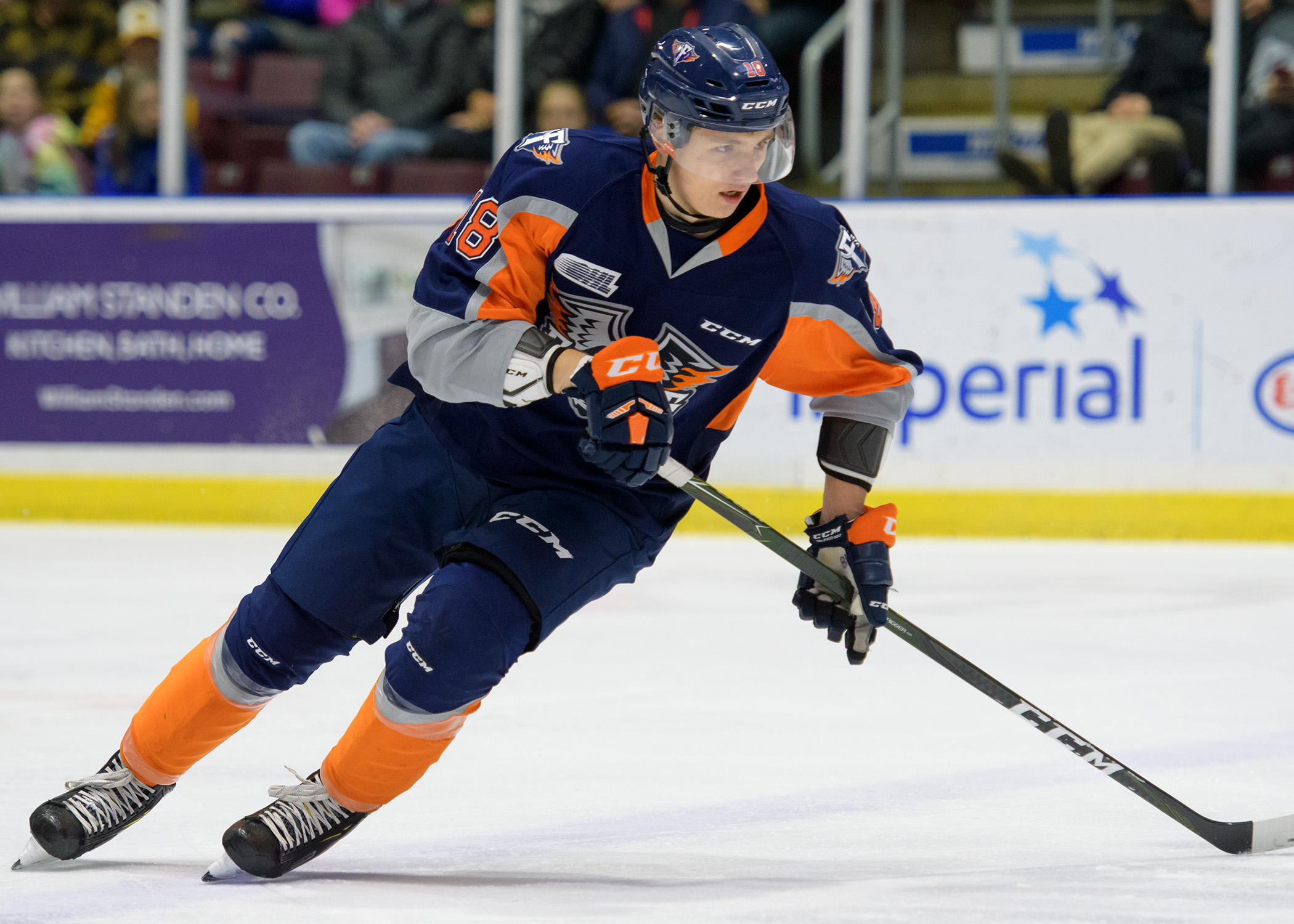
32. Maxim Cajkovic, 5’11” RW, Saint John – QMJHL (0.77 P/GP)
Cajkovic played on a horrendous team this year, so you almost have to throw his point-per-game production out the window. He led his team in scoring by 12 points, but it’s tough to be a point-per-game scorer on a team that got outscored 169 to 364. He’s been consistently outstanding for Slovakia over the years and he would have dominated the SuperElit league if he had stayed there.
Cajkovic is a talented puck carrier with an above average shot. He can fire a decent one-timer from the Ovechkin spot on the power play and he’s crafty enough with the puck to fool goalies by changing the angle of his wrist shot. While his skating draws mixed reviews, I think he’s average to slightly above average in this regard. I love the quick release on his shot. He probably won’t be a first round pick, but I do see first-round tools.
33. Karl Henriksson, 5’9″ C/LW, Frolunda – SuperElit (1.09 P/GP)
One of Sweden’s best forwards at the U18 tournament, I think Henriksson has been a little bit overlooked because of his size. He’s quick enough to have a real chance of making the NHL as a 5’9″ forward, as he’s quite talented at generating zone entries and setting up his teammates. He greatly benefitted from playing with top-prospect Lucas Raymond, but he’s a talented playmaker in his own right and I won’t be shocked if he becomes an option on an NHL penalty kill. He’s a clear top-50 player in this class for me.
34. Jamieson Rees, 5’10” C, Sarnia – OHL (0.86 P/GP)
Rees put up 32 points in 37 games with Sarnia this year, and while that’s not horrible, it’s probably keeping him outside of the first round on most lists. He was a major standout for me at the Top Prospects game, U18 tournament, and the Hlinka, so I think it’s only a matter of time until he moves up the depth chart and dominates.
A 5’10” center who plays like he’s the biggest guy on the ice, he’s relentless on the puck, quick in transition, and intelligent on the penalty kill. He has enough speed to beat most defenders out wide and the hands to make them look foolish if they get too aggressive. He reminds me a little bit of Travis Konecny. I think he can provide value both at 5-on-5 and on the penalty kill.
35. Vladislav Kolyachonok, 6’1″ LD, Flint – OHL (0.54 P/GP)
Kolyachonok is flying a little bit under the radar on some lists probably because he played for a bottom OHL team. It’s also safe to say that Team Belarus gets less attention than Team Canada. While he’s not elite offensively at this point, he really stands out as a skater and he sure looked comfortable with the puck on his stick at the Top Prospects game.
He moves well laterally, and because he’s so mobile, he could easily transition over to the right-side if needed. He’s able to keep a tight gap in transition and he’s also not small, so his reach allows him to break up zone entries. He was excellent at the U18 tournament, and even though he probably won’t be a 50-point scorer, he’s well-rounded enough to have a real shot at a long NHL career.
36. Raphael Lavoie, 6’4″ RW/C, Halifax – QMJHL (1.18 P/GP)
Lavoie is a power-forward who managed to score 20 goals in 23 playoff games this season, so I won’t be surprised when he ends up being a first-round pick. He also led Canada in goals at last year’s U18 event, so it’s not like his playoff run came out of nowhere. He’s able to overpower CHL players and he certainly has some finishing ability, but I don’t see him as an above-average skater. Despite his fantastic playoff run, I have a hard time putting him ahead of 2001-born players who outperformed him in terms of points per game.
37. Samuel Poulin, 6’1″ LW, Sherbrooke – QMJHL (1.13 P/GP)
Poulin led his team in scoring by 17 points and it’s easy to see a player with his size and speed developing into a valuable NHL forward. He wins a lot of battles, is willing to go to the net, and he can be a valuable net front-presence on any power play. He has quick hands, a little bit of playmaking ability, and he’s very comfortable with the puck on his stick. He was more of a role player for Canada at both the Hlinka and U18 rather than a star, but he has all the tools to be an NHL forward someday.
38. Dominik Fensore, 5’8″ LD, USDP – USHL (1.04 P/GP)
He’s quick enough to have a real chance at making the NHL, even at his size. He can pull off an end-to-end rush thanks to his ability to beat defenders out wide and he’s going to factor in on the power play. He did not play on the USDP’s stacked #1 powerplay, but he still managed to score at an impressive rate. He was one of the best defensemen on a loaded USDP roster this year and he could be a steal in the mid-rounds. It’s tough to put a ton of faith into a 5’8″ defenseman, but I love the speed that he brings. He probably won’t be a top-60 pick on draft day, but he should be.
39. Ilya Nikolayev, 6’0″ C, Loko Yaroslavl – MHL (0.61 P/GP)
Russia was a strong team at both the Hlinka and U18 tournaments, where Nikolayev was their top center. Although he’s an average skater, he was talented enough with the puck to be a factor in transition at these events. He projects as a two-way center at the NHL level and the main question is how much he will score. I don’t love his MHL numbers, but I like his chances of sticking at center. He’s also shown off his offensive skill set at international events.
40. Connor McMichael, 6’0″ C, London – OHL (1.07 P/GP)
McMichael scored at a similar rate as Suzuki, Tomasino, and Nick Robertson this year, so it’s possible that he’s falling a little bit too much after a disappointing playoff run. He’s a two-way center with no major weaknesses in his game; he doesn’t look out of place as a skater, puck carrier, playmaker, or shooter. I’m not sure I’ve seen the “wow” factor of a first round pick, but he’s a solid two-way center who may end up in a checking-line role.
41. Albin Grewe, 5’11” C/RW, Djurgardens – SuperElit (1.36 P/GP)
Grewe posted 34 points in 25 SuperElit games this season to go along with 102 (!) penalty minutes. He’s a pest who competes well, and while he may not have the speed to stick up the middle, he’s talented enough as a carrier to create scoring chances for his linemates. His point-per-game production is very impressive, but he was held off the scoresheet in 15 SHL games and he hasn’t been a huge scorer at international competitions.
I’m not sure if he will get much stronger, which would mean he will have a tougher time over-powering NHL defenders. He is underrated as a transition player, though, so he should be a lock for to be taken in one of the first two rounds. He will have no problem transitioning over to the North American game.
42. Nathan Legare, 6’0″ RW, Baie-Comeau – QMJHL (1.28 P/GP)
Legare is a power-forward who knows how to find the back of the net. He’s not outstanding as a playmaker or transition player, but he was one of the best draft-eligible goal scorers in the CHL this year, and it’s easy to see why — he’s heavy winger who can get in on the forecheck and win battles. I expect him to be a top 50 pick as a result. My main concern here is that he doesn’t have much room left to grow, but he skates well for a power forward and offers plenty of shooting talent.
43. Artemi Knyazev, 5’11” LD, Chicoutimi – QMJHL (0.62 P/GP)
Knyazev was a favourite of mine at the Hlinka despite the fact that he did not register a point in five games. He makes smart decisions all over the ice and moves around quite well, so I’m simply a fan of his all-around game. He’s not going to be an elite point producer, and he’s not 6’6″, but I always seem to end up impressed when I watch him play.
44. Antti Saarela, 6’0″ LW/C, Lukko – Liiga (0.42 P/GP)
Saarela recorded 10 points in 24 Liiga games, and although that’s a small sample, it’s pretty much identical to what Sebastian Aho did in his draft year. He’s an above average skater and transition player who I thought he stood out at the U18 tournament, so I’m not sure why he’s not higher in most draft rankings. His lack of strength may push him over to left-wing, but I think he’s talented enough to surprise a lot of people down the line. His brother is in the Carolina Hurricanes system and can really play but does not get talked about enough as a prospect. The same thing seems to be happening to Antti as he’s not in Bob McKenzie’s top 93.
45. Ryan Johnson, 6’0″ LD, Sioux City – USHL (0.46 P/GP)
Full disclosure here: I’ve barely watched him play. This is a bit of a placeholder ranking as a result, but I have liked what I’ve seen. He’s quite clearly an above-average skater and he’s not overly small, so that’s a great framework to build on. His point production is not overly impressive, but I’ve seen some pretty damn impressive highlights from him, so there’s a lot to dream on here. I won’t be shocked if he’s a steal, but I haven’t watched him enough to say that with confidence.
46. Ethan Keppen, 6’2″ LW, Flint – OHL (0.87 P/GP)
He didn’t play for Canada at the Hlinka or U18 and he didn’t play for a good OHL team, so I expect him to fall under the radar on most lists. He’s a big winger who is responsible defensively, wins a lot of battles, and is underrated as a puck carrier. I think he’s fast enough to be an NHL player and his ability to win battles allows him to tilt the ice. He won’t be a star, but I think he could be a steal in the middle rounds.
47. Mikko Kokkonen, 5’11” LD, Jukurit – Liiga (0.34 P/GP)
Kokkonen is coming off of a huge year in a pro league and he followed that off by showing off his mature game at the U18 tournament. He’s a capable passer who skates well on his edges but lacks the top gear to be a star offensively. While he’s never been an offensive star for Finland, he’s capable of playing a shutdown role and should be a key player for his country at the World Juniors.
Unlike the majority of players in this class, he may want to drop a little bit of weight in an attempt to get a step quicker. I think he’s clearly behind Heinola and I don’t see him as a top-pairing defender at the next level, but he could have a long and productive NHL career thanks to his well-rounded skill set.
48. Lassi Thomson, 6’0″ RD, Kelowna -WHL (0.65 P/GP)
Thomson was one of the best defensemen on the ice at the Top Prospects game. It’s tough to find a major weakness in his game. He’s average to slightly above average as a skater, puck mover, and defender, but he doesn’t have one clear strength that will absolutely carry him to the NHL. He’s smart, fairly physical, and can challenge opposing forwards in transition. As a right-shooting defenseman who is not overly small, he seems to be a relatively safe bet to make the NHL.
49. Brett Leason, 6’4″ RW, Prince Albert – WHL (1.62 P/GP)
Leason, who was eligible for the 2017 draft, put himself on the map this year by posting an impressive 89 points in just 55 WHL games. He was also Canada’s fourth-leading scorer at the World Juniors, so he’s now a lock to be a top-60 pick. While he’s still not an amazing skater, he’s much faster than he used to be, and that’s probably enough to make the NHL as a 6’4″ power forward. He wins battles, protects the puck well, and does well to create chances for his teammates down-low in the offensive zone. He should step right into the AHL next year.
50. Yegor Afanasyev, 6’4″ LW, Muskegon – USHL (1.07 P/GP)
Afanasyev is a big power forward who posted pretty impressive numbers in the USHL this year. He’s an average skater at best right now, but he’s impressive with the puck and can really make a defender look bad. It’s tough to find a 6’4″ forward who can weave his way around defenders like Afanasyev can. If you’re looking for a magician with the puck, this is probably your pick. If he can get a step quicker, he’s probably an NHL winger.
51. Tobias Bjornfot, 6’1″ LD, Djurgardens – SuperElit (0.56 P/GP)
Bjornfot is not overly flashy, but he’s consistently been one of Sweden’s better defensemen over the years and he’s at least competent as a puck mover. The team that drafts him will probably be hoping for a shutdown guy, as he’s 6’1″ and moves quite well and also carries a reputation of being reliable in his own end. He’s never been a big-time scorer, but I wouldn’t say that he’s horrific as a puck mover.
52. Robert Mastrosimone, 5’10” LW, Chicago – USHL (1.11 P/GP)
Mastrosimone’s point-per-game production came up just short of Brock Boeser and Nick Schmaltz, but it was certainly enough to put him in the top-60 conversation. He’s a tiny player with a quick release and he’s able to sneak his way into the slot to generate high-danger scoring chances. He’s not very fast for a player of his size, which could force him to the wing. He needs to get a step quicker if he wants to make the NHL, but if that happens, he has the skill and tenacity to be valuable.
53. Billy Constantinou, 5’11” RD, Kingston – OHL (0.5 P/GP)
Constantinou was a big standout at the Top Prospects Game where he showcased his ability to spin away from opposing forecheckers. He’s a little bit undersized, but he’s easily an above-average skater and he’s talented enough with the puck to play on an NHL power play. He started off the year with 15 points in 22 games on a deep Niagara team before cooling off considerably once he got traded to Kingston. I think he’s flying a little bit under the radar because he played for a bottom team. There’s a lot to dream on here once he gets stronger.
54. Zachary Jones, 5’10” LD, Tri-City – USHL (0.93 P/GP)
Jones has very impressive numbers for a USHL defenseman, but he didn’t play in the Hlinka or U18 tournaments, which probably explains why he’s flying a little bit under the radar. He’s quick, aggressively challenges opposing forwards, and he can really rush the puck up the ice. He needs to get stronger, but he’s an intelligent player who provides flashes of brilliance.
55. Brayden Tracey, 6’0″ LW, Moose Jaw – WHL (1.23 P/GP)
Tracey outscored potential top-10 picks like Kirby Dach and Peyton Krebs this year before putting up seven points in seven games for Canada at the U18 tournament. That level of production put him on the map, but he’s not a great skater and he really benefitted from playing on a stacked line. He’s a smart playmaker on the power play, crafty with the puck, and still has room to grow physically. While he wasn’t the one “driving” his line, there’s no denying that he had an outstanding rookie season in the WHL last year.
56. Marshall Warren, 5’11” LD, USDP – USHL (0.5 P/GP)
Warren was far from the main attraction on the USDP this year, but he’s an NHL-calibre skater who consistently impressed me. He did not get power play time on a team with Cam York and Domenick Fensore, so I think he’s better than his Elite Prospects page suggests. He needs to put on a little bit of weight, but he’s a good athlete who can surprise you with his speed.
57. John Beecher, 6’3″ LW, USDP – USHL (0.74 P/GP)
Beecher is 6’3″, fast, and a work-horse. He played lower down in the lineup for the USDP this year, but his speed and strength combination makes it easy to envision him as an NHL player at least in some capacity. He doesn’t have the upside of a first-round talent, but he has a chance to be a Zach Hyman-type.
58. Leevi Aaltonen, 5’9″ LW, KalPa – Jr. A Liiga (1.24 P/GP)
If Aaltonen was a couple of inches taller, he would probably be a lock for the top 60. He played in the U17, Hlinka and U18 tournaments twice, and his speed always allowed him to contribute against older competition. He scored in bunches for KapPa’s U20 team this year and even earned seven games on their pro team, but I won’t be surprised if he slips to the mid-to-late rounds. I don’t see a star shooter or playmaker, but I like his transition game, speed, and work ethic.
59. Simon Holmstrom, 6’1″ RW, HV71 – SuperElit (0.95 P/GP)
Holmstrom is coming off of a strong performance at the U18 tournament and I won’t be surprised if he rises up draft boards as a result. He’s pretty crafty for a bigger winger, but he needs to put on weight and play a heavier style. I think he’s just an average skater and there’s not a ton of flash in his game, but he always seems to find a way to produce offensively.
60. Yegor Spiridonov, 6’2″ C, Magnitogorsk – MHL (0.95 P/GP)
Spiridonov is a defensively-responsible center who put up an impressive amount of points in the MHL this year. He’s tenacious in puck battles, not afraid to go to the net, and can be the net-front presence on his team’s powerplay. While he only had one point at the Hlinka, he rebounded by becoming Russia’s second-leading scorer at the U18. He’s not an above-average skater and I don’t see him becoming the next William Nylander in transition. However, he is quite skilled around the net, competes well, and he is coming off of a strong season.
61. Mike Koster, 5’9″ LD, Tri-City- USHL (0.4 P/GP in 15 games)
Koster was a favourite of mine at the Hlinka, but he spent most of the year playing high school hockey in Minnesota. He’s a high-end puck mover who lacks size and he’s going to have to prove that he can match up against top competition. He’s one of the bigger unknowns in this class as he only played 15 games in the USHL season, but he sure looked like a potential steal back at the Hlinka.
62. Mikhail Abramov, 5’10” RW/C, Victoriaville – QMJHL (0.87 P/GP)
Abramov scored seven points in five games back at the Hlinka, then became his team’s third-leading scorer as a QMJHL rookie. He’s a decent skater who can help his team in transition, but he needs to get stronger and work on his shot. He’s a talented playmaker, and while he’s a little bit iffy defensively at the moment, he could take another big step forward once he gets stronger.
Honourable Mentions: Nikita Alexandrov, Henry Thrun, Kaeden Korczak, Shane Pinto, Nolan Foote, Tuukka Tieksola, Kirill Slepets, Daniil Gutik, Sasha Mutala, Arseni Gritsyuk, Alex Campbell, Graeme Clarke, Case McCarthy, Justin Bergeron, Yaraslav Likhachyov.











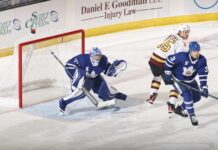
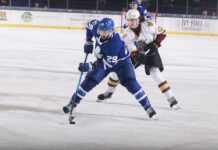

![John Gruden after the Leafs prospects’ 4-1 win over Montreal: “[Vyacheslav Peksa] looked really comfortable in the net… We wouldn’t have won without him” John Gruden, head coach of the Toronto Marlies](https://mapleleafshotstove.com/wp-content/uploads/2025/09/gruden-post-game-sep-14-218x150.jpg)





